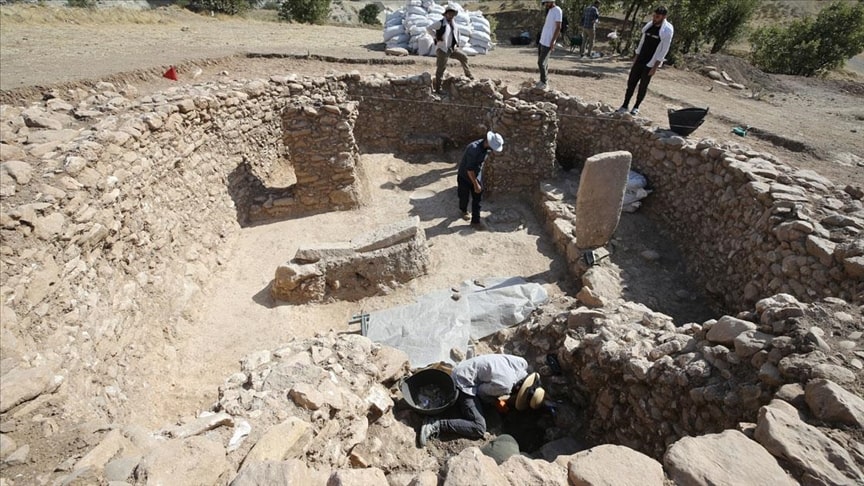For many years, Gobekli Tepe was considered to be the oldest human settlement. Previously taking the title of the first temple in the world, archaeologists recently unearthed Boncuklu Tarla, which is believed to be roughly 1,000 years older than Gobekli Tepe.
Gobekli Tepe Considered The Oldest Temple in the World
Gobekli Tepe is an archaeological site near Şanlıurfa in Southeastern Anatolia, Turkey. It dates back to the Pre-Pottery Neolithic times, which are believed to be around 9500 and 8000 BCE. The site itself is home to many circular structures, which are the world’s oldest megaliths.
The site was originally noted in a survey back in 1963, and excavations continued until excavator Klaus Schmidt’s death in 2014. During the first discovery of the site, it was mistaken for grave markers, and it’s believed that locals had moved rocks over the years and disturbed the upper layers of this site. Various institutions have continued to unearth this site until this day, and it was made a UNESCO World Heritage Site in 2018.
With less than 5% of the site excavated, it’s still a source of mystery to the world in many ways, with many questions to be answered about how the site came to be and what it represents to our world.
The Sanliurfa Museum and German Archaeological Institute have continued work on this site in recent years. Recent discoveries include T-shaped obelisks dating back to the Neolithic era, which weigh up to 60 tons each.
One of the most exciting findings was a 26-inch human statue, which dates back over 12,000 years. While there are many questions to be still answered about Gobekli Tepe, the unearthing of Boncuklu Tarla has brought with it even more questions surrounding which mysterious ancient civilizations could have built these settlements.
Boncuklu Tarla – Older Then Gobekli Tepe
The work to unearth Boncuklu Tarla began in the Dargecit district in 2012. The area was known for its rich history and was home to many past civilizations, including Sumerians, Babylonians, Greeks, Romans, and Ottomans. This archaeological site is home to the remains of a settlement that was believed to be occupied during the Late Epipalaeolithic to Pre-Pottery Neolithic B periods.
During the construction of the Ilısu Dam in 2008, an archaeological survey took place to prepare for this work. At this time, researchers first discovered the site, leading to the work that’s been taking place since 2012. The site began to attract more attention in 2019 when a large communal building with stone pillars was discovered by the team working at Boncuklu Tarla. A sewer system was also uncovered, and when this is confirmed, it would be the oldest known sewer system in the world to this date.
Who Built This Ancient Settlement?
One of the biggest questions we are left with when learning more about Boncuklu Tarla is who could have built this settlement? Sources state that it’s possible that these findings prove the first settlers in this area were believers.
It was potentially one of the first areas where humanity settled and is estimated to be roughly 12,000 years old. With many houses, dwellings, temples, and notable buildings already unearthed, it’s clear it was home to an ancient civilization.
Further work is certainly needed to confirm who the area was home to. However, archaeologists have already learned a lot about how the people of northern Mesopotamia and the upper Tigris began to transition from their hunter-gatherer life. We see how cultural and religious structures were built over time and how food production started during this time period.
Many of the buildings that have been uncovered so far at Boncuklu Tarla strike a very similar resemblance to those at Gobekli Tepe. The similarities between these two sites are uncanny, and they lie just 300 kilometers apart from each other. One of the reasons that these two sites receive so much attention is that they are working to change our understanding of the development of human society.
Many researchers believe these discoveries can help to shape our knowledge of the past, and as excavator Klaus Schmidt commented about Gobekli Tepe, “First came the temple, then the city.”
The developments of the past have had a significant influence on the urban life we know today, and it will be fascinating to see what Boncuklu Tarla will teach us as more of this site is uncovered.
Advanced Ancient Civilization?
One of the biggest questions we are left with about this site is how a population large enough to construct this site was compensated during this time period.
At Gobekli Tepe, scholars have still not been able to interpret the pictograms at the site, leaving us with more questions than answers in many cases. With many pictures of predators, it’s believed some of the animal pictures were meant to stave off evils with potential links to the magic of the past.
Suggestions were made that Gobekli Tepe was linked to a cult of the past and not inhabited. These rumors are generally dispelled thanks to the large communal houses. In some ways, they are very similar to the plank houses of the past on the Northwest Coast of North America, suggesting that one of the first communities in this area called Gobekli Tepe home.
Currently, Boncuklu Tarla still sits mostly uncovered on the top of a hill in the Southeastern Turkish countryside. It’s attracted much debate and controversy between researchers and scientists, and many of these individuals are reluctant to accept that a site up to 1,000 years older than Gobekli Tepe could really exist.
The newly excavated site needs much more work for us to uncover who really created this incredible area. Still, hopefully, over the following decades, work will continue on Boncuklu Tarla in the same way that it has these past years on Gobekli Tepe.
We can’t wait to hear future updates about Boncuklu Tarla and continue to learn which mysterious ancient civilization this area was home to.



